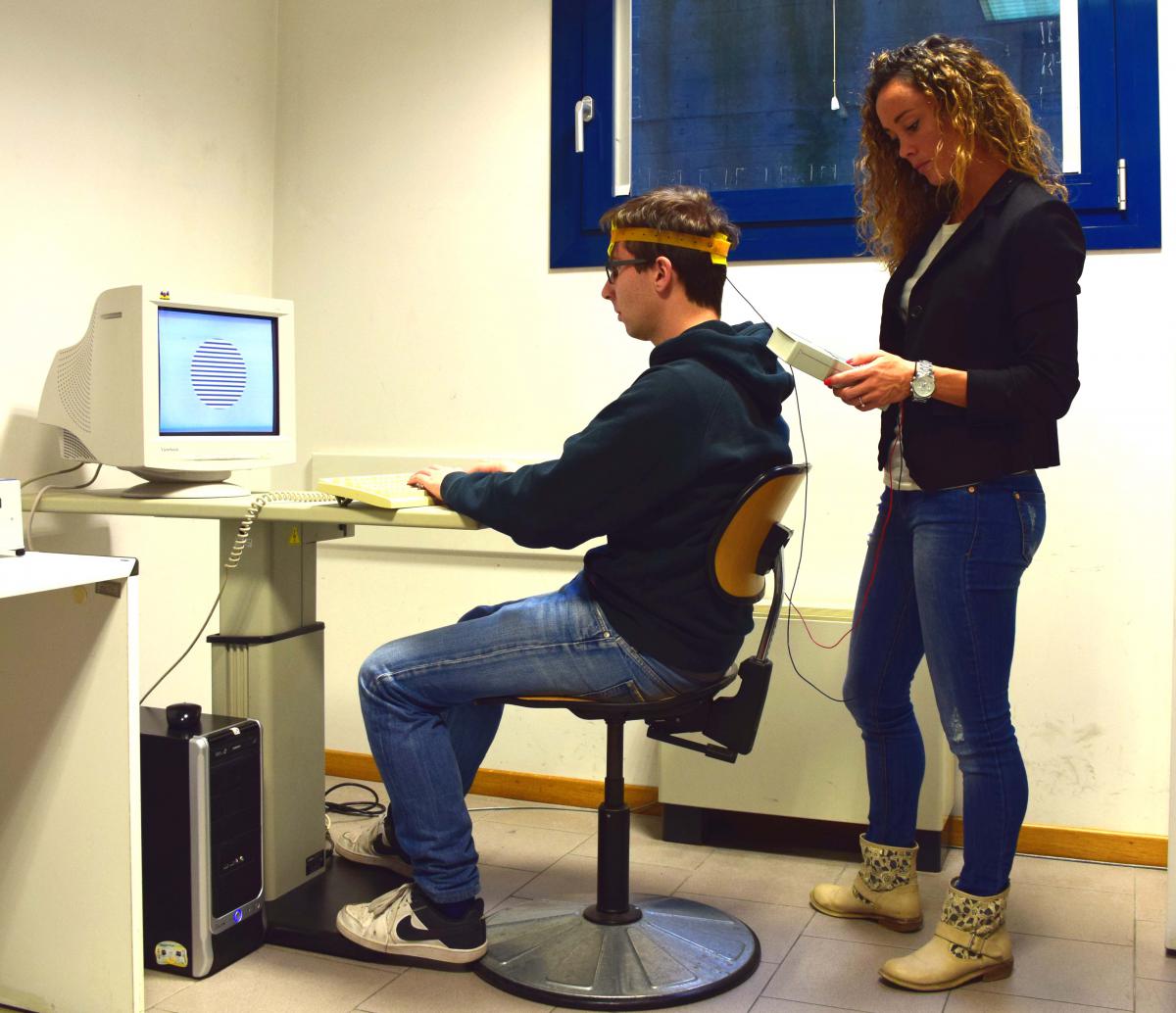tES
Transcranial electrical stimulation (tES) is a method of brain stimulation, painless and non-invasive, which allows to modify excitability of neurons of circumscribed portions of the cerebral cortex (and thus cognition and behavior associated to the stimulated cortical regions) using low intensity currents. It is common practice to distinguish between three main types of tES based on the waveform that characterizes the stimulation: Direct current (tDCS), alternating current (tACS) or random noise (tRNS) stimulation.

Mechanism of action
Unlike other invasive and non-invasive brain stimulation techniques (electro-convulsion, deep electrical stimulation, TMS), tES does not directly induce action potential in the stimulated neuronal population, but rather, modulates its spontaneous activity (Fertonani & Miniussi, 2017; Nitsche et al., 2008). This modulation of the membrane potential varies as a function of various parameters such as current intensity, duration of stimulation, positioning of electrodes, direction of charge flow at each electrode – anodal or cathodal - with tDCS, temporal frequency of the alternating current with tACS or tRNS).
Safety
tES in its various forms has been used widely since the beginning of the 20th century, and many thousands of subjects have been stimulated with different types of protocols. To date it is considered a rather safe method. This type of stimulation being sub-threshold, does not cause suffering, muscle contractions or spasms and in general the reported side effects (such as skin tingling) are "minor". In most cases it does not produce any kind of side effect.
However, it is necessary to respect certain limitations and take precautions for its safe use. (Fertonani et al., 2015; Loo et al., 2011; Nitsche et al., 2003). For research, only for stimulations that exceed the safety guidelines it is strongly suggested the presence of bls (Basic Life Support) certified personnel in the structure. For therapeutic applications, a medical setting is required, and a medical doctor must be involved in the study.
Effectiveness
In addition to applications in basic research, tES has excellent clinical potential as evidenced by numerous recent studies. Electrical stimulation alone or in combination with other therapeutic treatments can in fact mitigate motor, perceptual and cognitive deficits related to brain trauma and brain degeneration as well as promote cognitive efficiency in many clinical and non-clinical populations (Bestmann & Walsh, 2017).





